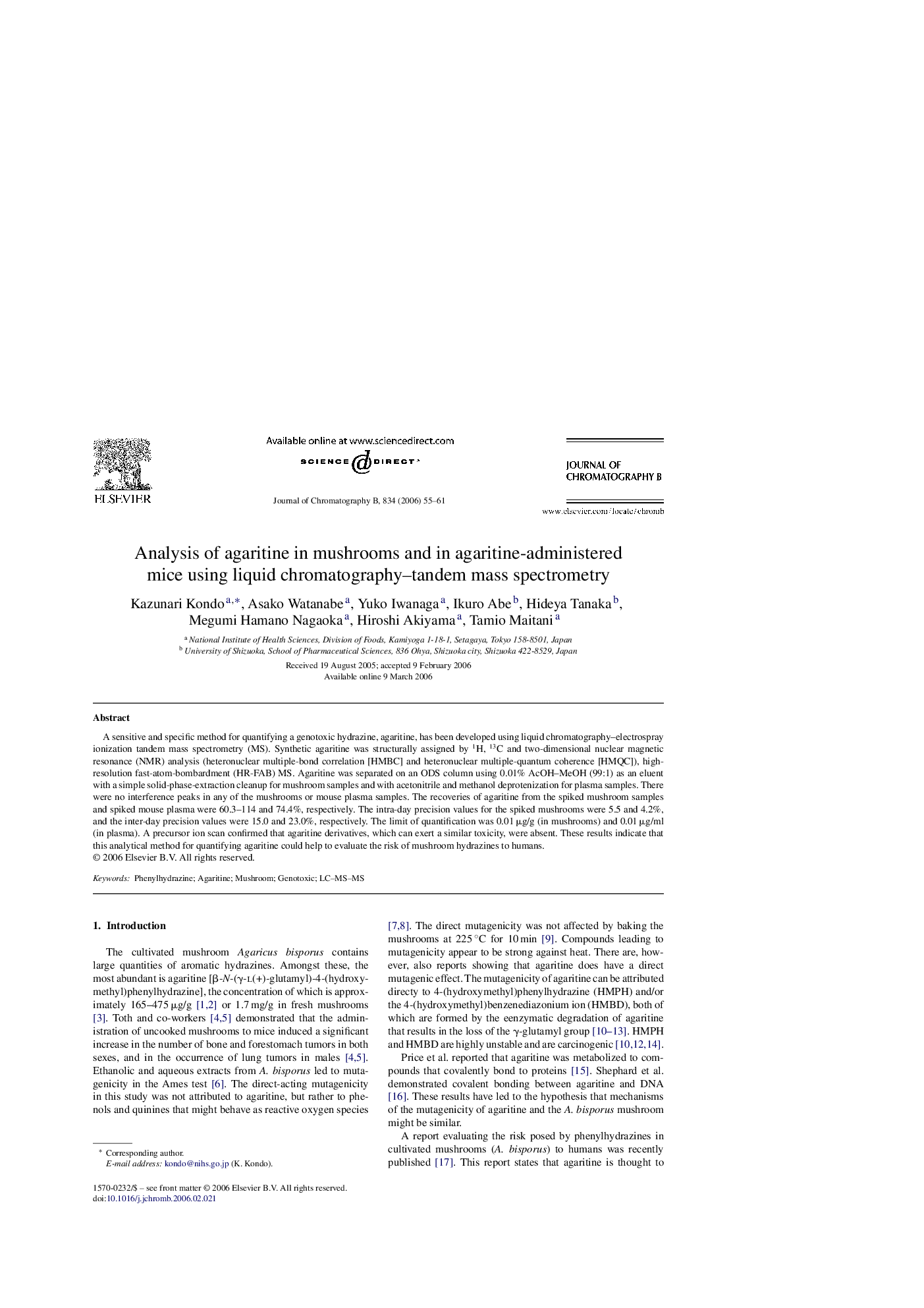| Article ID | Journal | Published Year | Pages | File Type |
|---|---|---|---|---|
| 1216655 | Journal of Chromatography B | 2006 | 7 Pages |
A sensitive and specific method for quantifying a genotoxic hydrazine, agaritine, has been developed using liquid chromatography–electrospray ionization tandem mass spectrometry (MS). Synthetic agaritine was structurally assigned by 1H, 13C and two-dimensional nuclear magnetic resonance (NMR) analysis (heteronuclear multiple-bond correlation [HMBC] and heteronuclear multiple-quantum coherence [HMQC]), high-resolution fast-atom-bombardment (HR-FAB) MS. Agaritine was separated on an ODS column using 0.01% AcOH–MeOH (99:1) as an eluent with a simple solid-phase-extraction cleanup for mushroom samples and with acetonitrile and methanol deprotenization for plasma samples. There were no interference peaks in any of the mushrooms or mouse plasma samples. The recoveries of agaritine from the spiked mushroom samples and spiked mouse plasma were 60.3–114 and 74.4%, respectively. The intra-day precision values for the spiked mushrooms were 5.5 and 4.2%, and the inter-day precision values were 15.0 and 23.0%, respectively. The limit of quantification was 0.01 μg/g (in mushrooms) and 0.01 μg/ml (in plasma). A precursor ion scan confirmed that agaritine derivatives, which can exert a similar toxicity, were absent. These results indicate that this analytical method for quantifying agaritine could help to evaluate the risk of mushroom hydrazines to humans.
